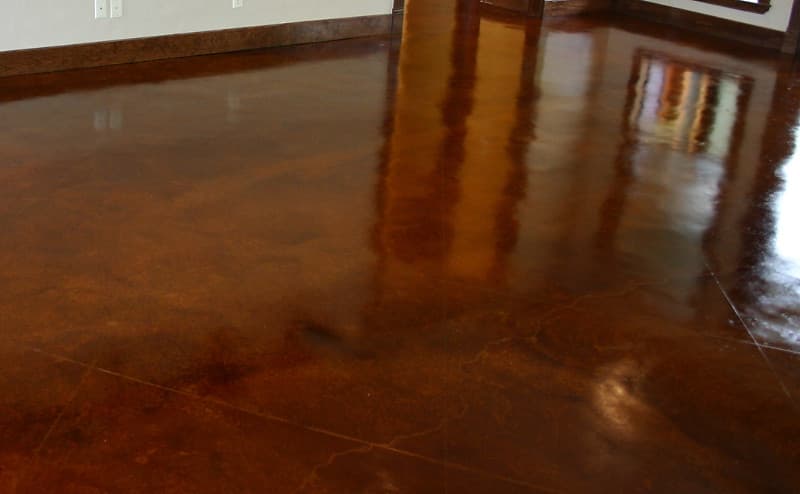Clean and Prep
step one - clean and prep.

Important Tip:
When staining concrete, cleaning and preparing the concrete is one of the most important steps. If the concrete hasn't been adequately cleaned and prepared, then inferior results can and will ensue.
Looking at concrete under a microscope
you see that it looks like a sponge. Though it appears to be a smooth
surface to the eye, it is actually very porous. The need to clean the
surface is obvious and fairly
easy, it's what stays trapped in the pores that will work
against you. This is the piece of the puzzle that makes the difference.
First, before doing your final clean, ensure the concrete is free from
all contaminants.
Strip any curing agents or waxes, remove any paints or glues, ensure there is no grease or oils.

Because many oils and petroleum based contaminants can be hard to see until after the stain is applied, we recommend that you first scrub the area with a concrete degreaser. Our Concrete Stain Prep and our Wax Remover are both excellent concrete degreasers.

Sanding the surface if needed is acceptable, whether by hand or with larger machines from rental stores, such as commercial floor sanders and floor buffing machines with sanding pads. However, it will reduce the coverage of the stain and sealer.
If you plan on scoring an border or pattern into the concrete, you should do this before you scrub and mop clean the concrete. That way you won't be mopping a hundred times over and over.
For Final Cleaning, you should do a good scrub down using T.S.P. (trisodium phosphate) and water. Use a stiff straw scrub brush or a floor buffing machine with the aggressive scrubbing pads. Mop or rinse a couple of times with clean water.

Note:
Many states no longer allow phosphates. But that's okay because our phosphate free T.S.P. works just as well, while being safer and better for the environment.
We
do not recommend using a new cotton mop as it could leave fuzz on the
floor. Although a cotton mop that has been used a few times does tend to
have most of the fuzzies out of it. You may choose to instead use a
synthetic mop. You can use a power washer or water hose when doing a project outside. Just be careful of splashing.
Pay attention to whether the water easily soaks into the concrete or not. (Especially important on new concrete.)
Once you have cleaned the floor, it is time to make any patch repairs that may be needed. We recommend that you do not patch small cracks or imperfections as they add character to the floor, but you decide for yourself.



Pro Tip:
Ensure you have an entry/exit point with a means to clean off or remove your shoes, such as clean towels to step out onto. This is twofold, to keep stain from tracking where you don't want it, such as you're sidewalk or carpet. Secondly, to keep from tracking dirt back into the area. Alternatively, you can use disposable shoe covers each time you enter/exit the room.
If you have pulled up carpet, removing the tack strips along the edge may cause areas that need to be patched. If you score a border around the edge you can then stain the border a darker color, or do more coats on the border than the rest. This will help in camouflaging the patch work. Alternatively for small divots and holes, you can not patch them, then after you've stained and neutralized, you can use a clear epoxy to fill the divot and smooth out even with the surface of the concrete, allow to dry/cure and then seal.
Scoring patterns and/or Multiple coats of stain strategically placed can help hide patches.

Tape and cover. Protect Your Surroundings.
After
you final clean the concrete, it is time to tape off and cover the
bottom of all walls, doors, and anything else that might possibly get
stain on it. Protect vegetation as well.
Tip: